In a divorce, the laws of equitable distribution distinguish marital property from separate property. Technically, only marital property, that is, proper...
If you are a driver in Iowa you are required to immediately notify the nearest law enforcement agency of any car accident that results in personal injury, death, or property damage to an apparent extent of at least $1,500. After police arrive to secure the crash scene, the investigating officer will gather evidence and use that information to complete an accident report. In Iowa, this official document is called the Investigating Officer’s Report of Motor Vehicle Accident (Iowa Department of Transportation Form 43303).
Your accident report contains several important details about your collision and can serve as a valuable piece of evidence when trying to prove fault for your crash. Consequently, if anything is wrong in your accident report it can have a negative impact on your case and affect the amount of compensation you’re legally allowed to recover.
Bear in mind that Iowa is a comparative negligence state, which means that any financial compensation you’re awarded through a settlement or court verdict will be reduced by the same percentage of fault that you’re assigned for the crash. Moreover, you can’t be found to be more than 50% at fault to make a financial recovery through a personal injury claim or lawsuit (this is commonly referred to as the 51% rule). Given that the official police accident report includes information that can help determine fault, it’s critical that every detail inside the report is accurate.
For a small fee, you may purchase a copy of your accident report by filling out a request form and mailing it to the Iowa Department of Transportation. An attorney can also help you obtain a copy of your report. If you notice something isn’t correct in your accident report or the investigating officer’s opinion of how the crash occurred doesn’t agree with the way you remember things happening, contact an Iowa car accident lawyer near you for help. An attorney can take steps to protect your legal rights and help you set the record straight.
Investigating Officer’s Report of Motor Vehicle Accident (Form 43303)
https://www.nhtsa.gov/sites/nhtsa.dot.gov/files/documents/ia_par_rev11_2013_implement2015.pdf
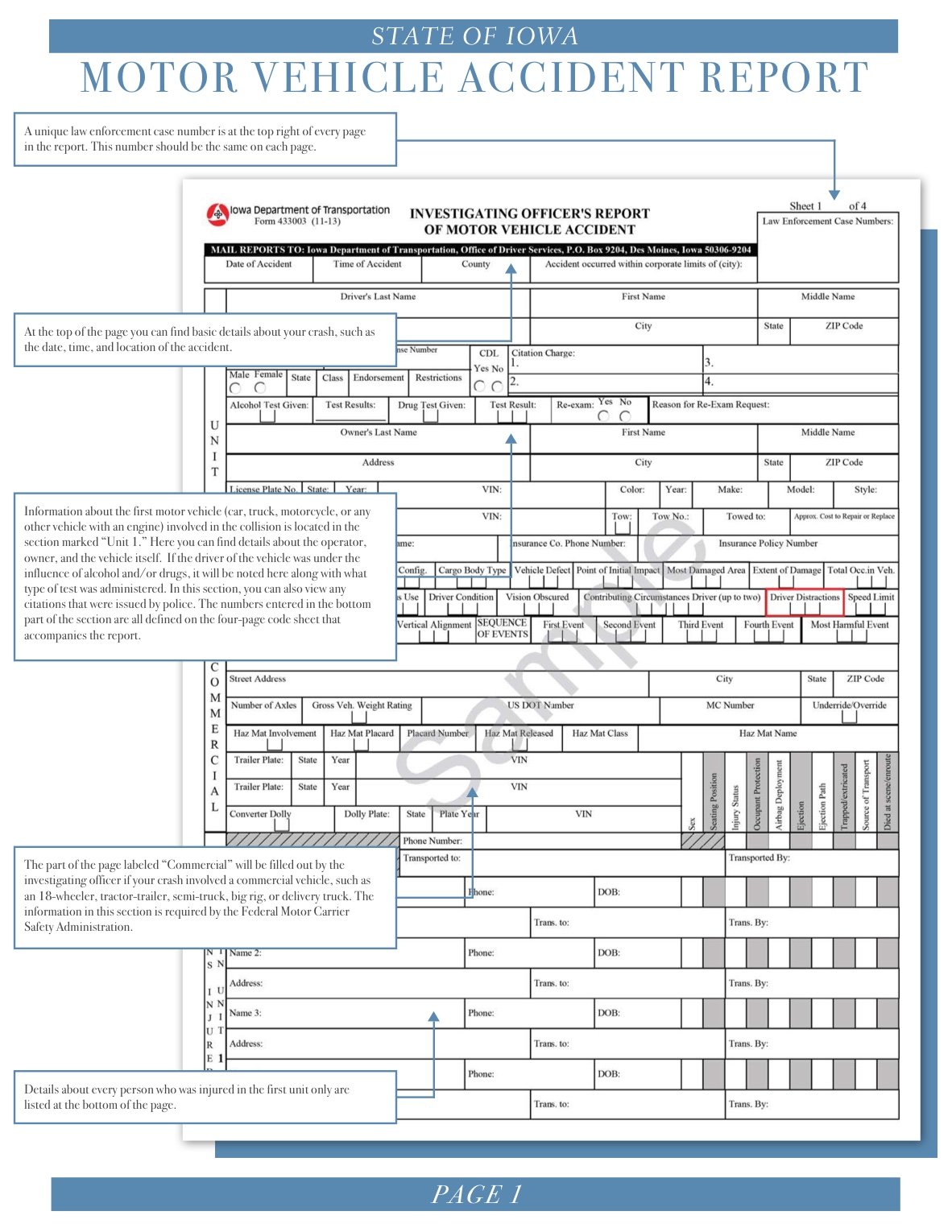
Page 1
A unique law enforcement case number is at the top right of every page in the report. This number should be the same on each page.
Click here to download a printable PDF of How to Read Your Iowa Accident Report.
At the top of the page, you can find basic details about your crash, such as the date, time, and location of the accident.
Information about the first motor vehicle (car, truck, motorcycle, or any other vehicle with an engine) involved in the collision is located in the section marked “Unit 1.” Here you can find details about the operator, owner, and the vehicle itself. If the driver of the vehicle was under the influence of alcohol and/or drugs, it will be noted here along with what type of test was administered. In this section, you can also view any citations that were issued by police. The numbers entered in the bottom part of the section are all defined on the four-page code sheet that accompanies the report.
The part of the page labeled “Commercial” will be filled out by the investigating officer if your crash involved a commercial vehicle, such as an 18-wheeler, tractor-trailer, semi-truck, big rig, or delivery truck. The information in this section is required by the Federal Motor Carrier Safety Administration.
Details about every person who was injured in the first unit only are listed at the bottom of the page.
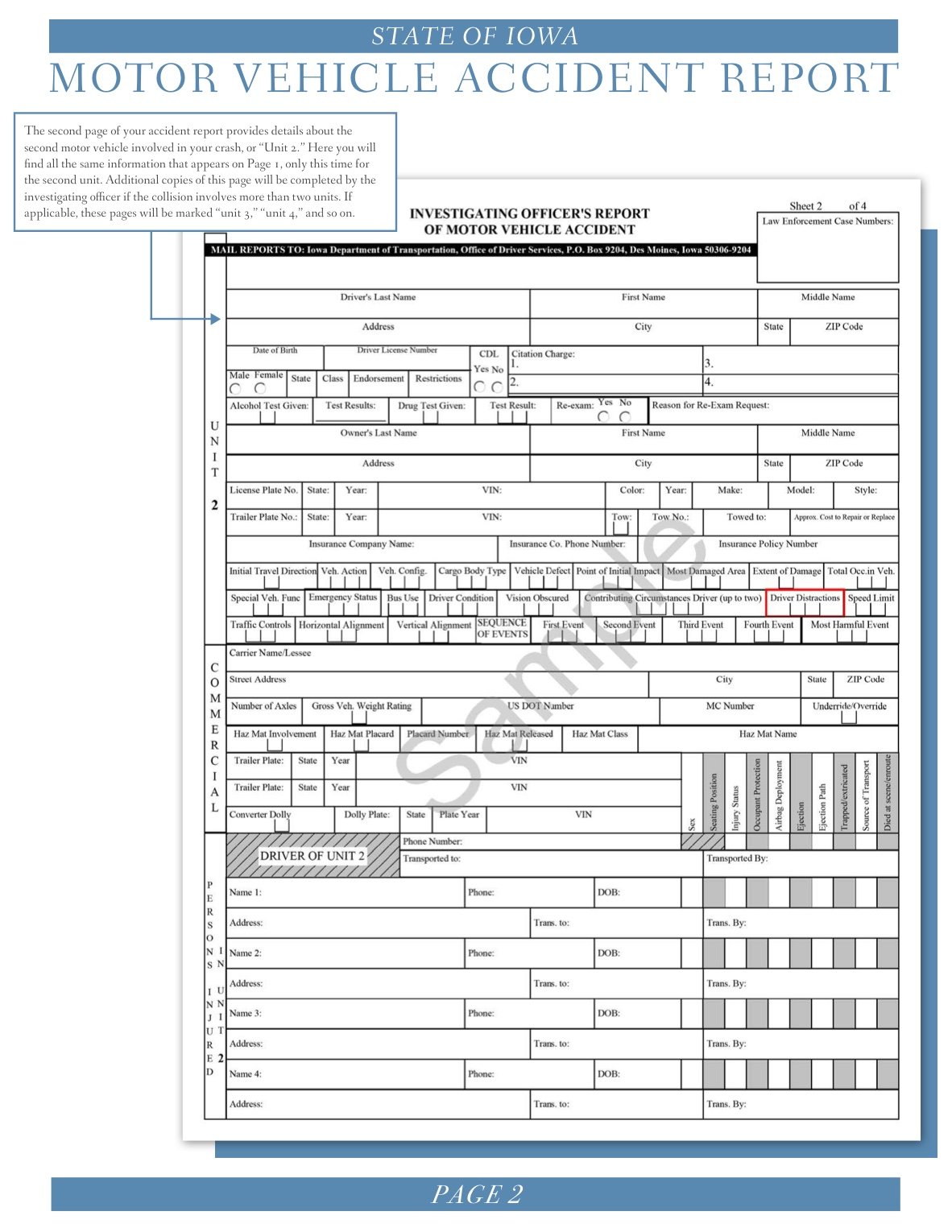
Page 2
The second page of your accident report provides details about the second motor vehicle involved in your crash, or “Unit 2.” Here you will find all the same information that appears on Page 1, only this time for the second unit. Additional copies of this page will be completed by the investigating officer if the collision involves more than two units. If applicable, these pages will be marked “unit 3,” “unit 4,” and so on.
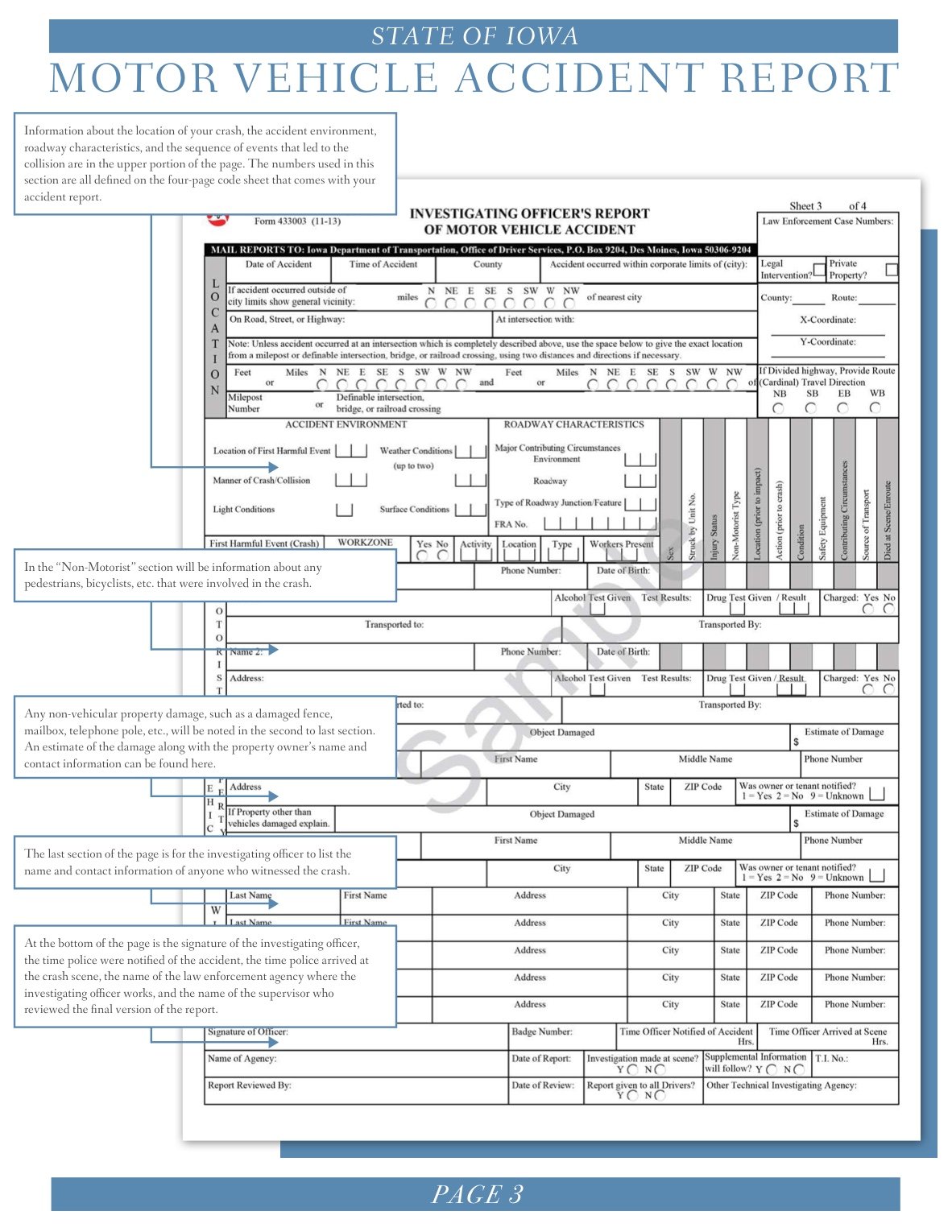
Page 3
Information about the location of your crash, the accident environment, roadway characteristics, and the sequence of events that led to the collision are in the upper portion of the page. The numbers used in this section are all defined on the four-page code sheet that comes with your accident report.
In the “Non-Motorist” section will be information about any pedestrians, bicyclists, etc. that were involved in the crash.
Any non-vehicular property damage, such as a damaged fence, mailbox, telephone pole, etc., will be noted in the second to last section. An estimate of the damage along with the property owner’s name and contact information can be found here.
The last section of the page is for the investigating officer to list the name and contact information of anyone who witnessed the crash.
At the bottom of the page is the signature of the investigating officer, the time police were notified of the accident, the time police arrived at the crash scene, the name of the law enforcement agency where the investigating officer works, and the name of the supervisor who reviewed the final version of the report.
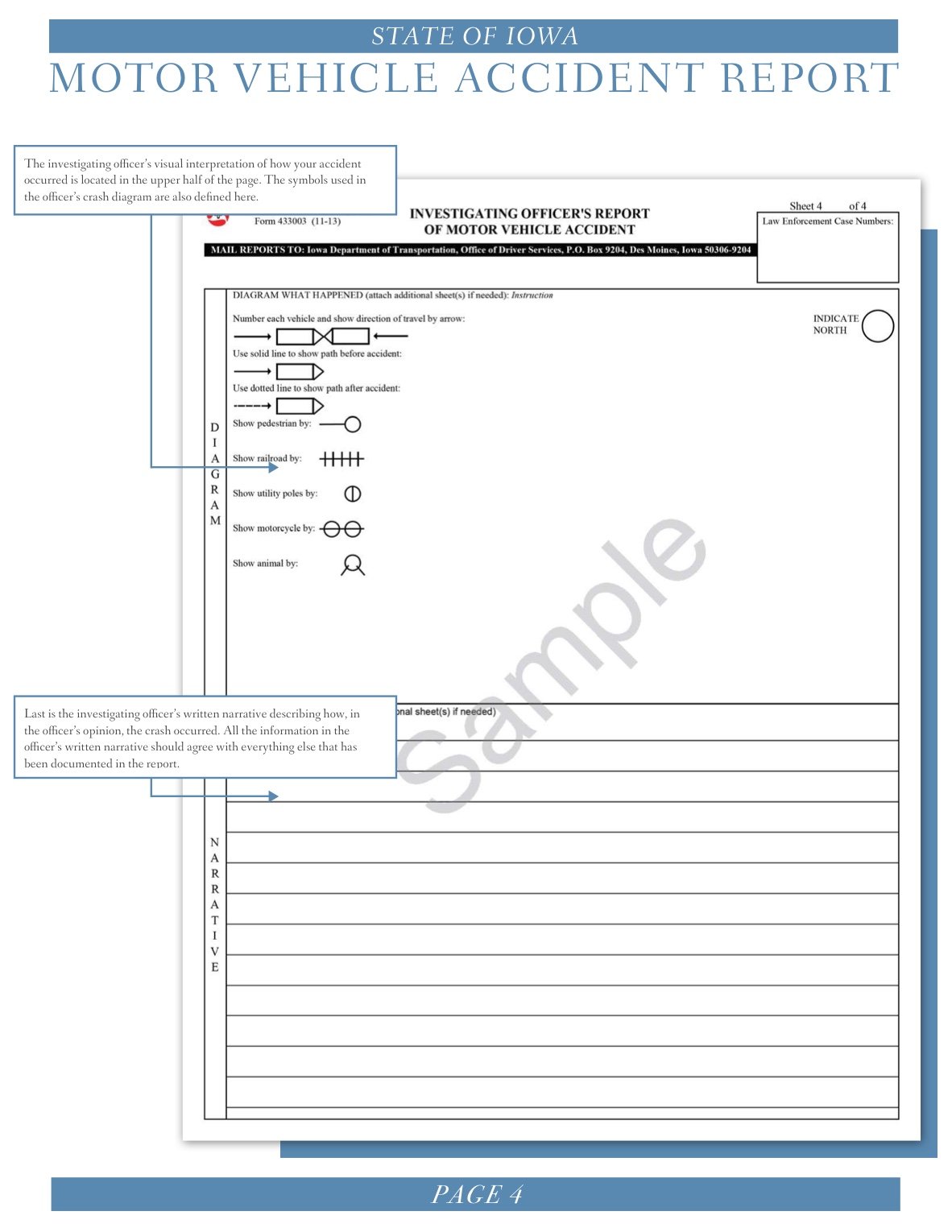
Page 4
The investigating officer’s visual interpretation of how your accident occurred is located in the upper half of the page. The symbols used in the officer’s crash diagram are also defined here.
Last is the investigating officer’s written narrative describing how, in the officer’s opinion, the crash occurred. All the information in the officer’s written narrative should agree with everything else that has been documented in the report.
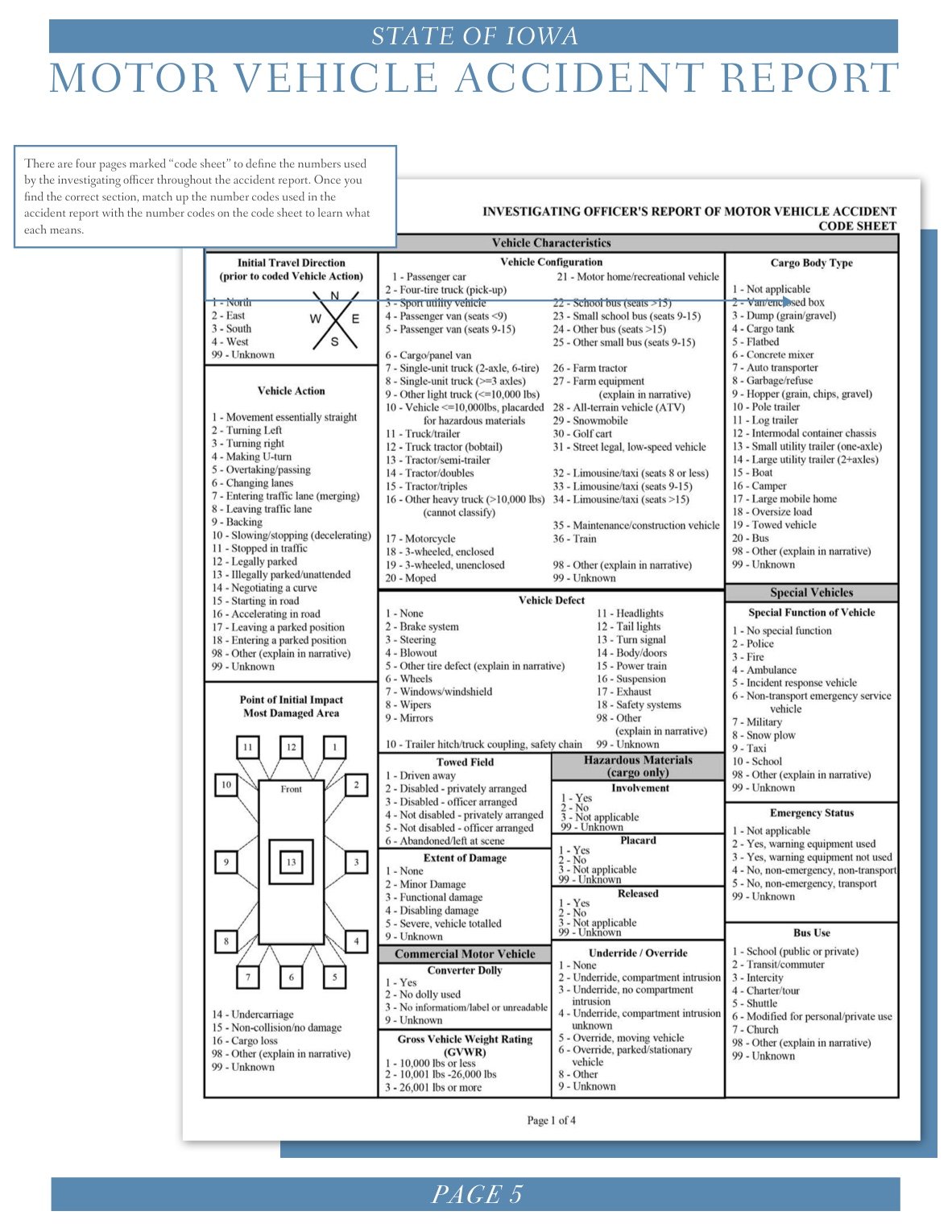
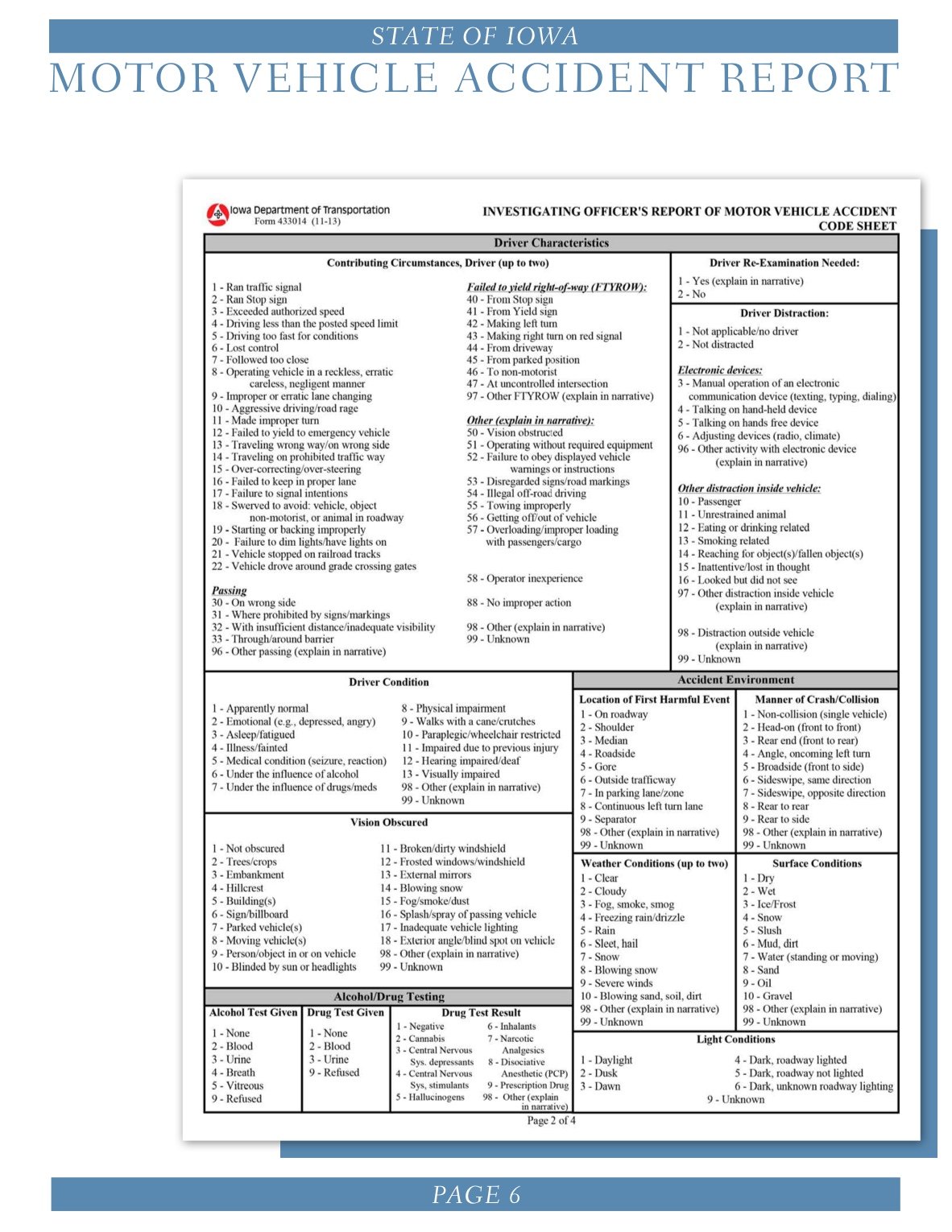
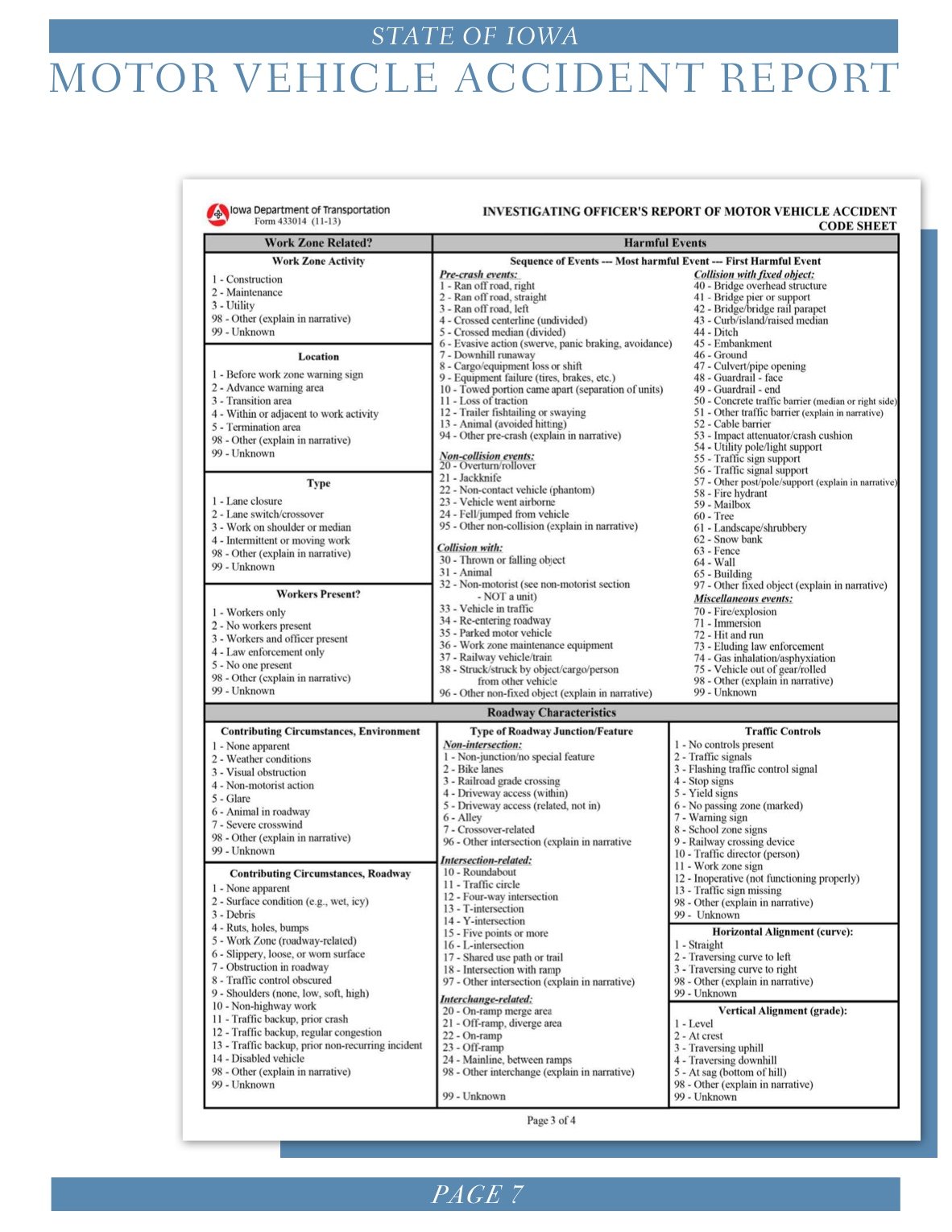
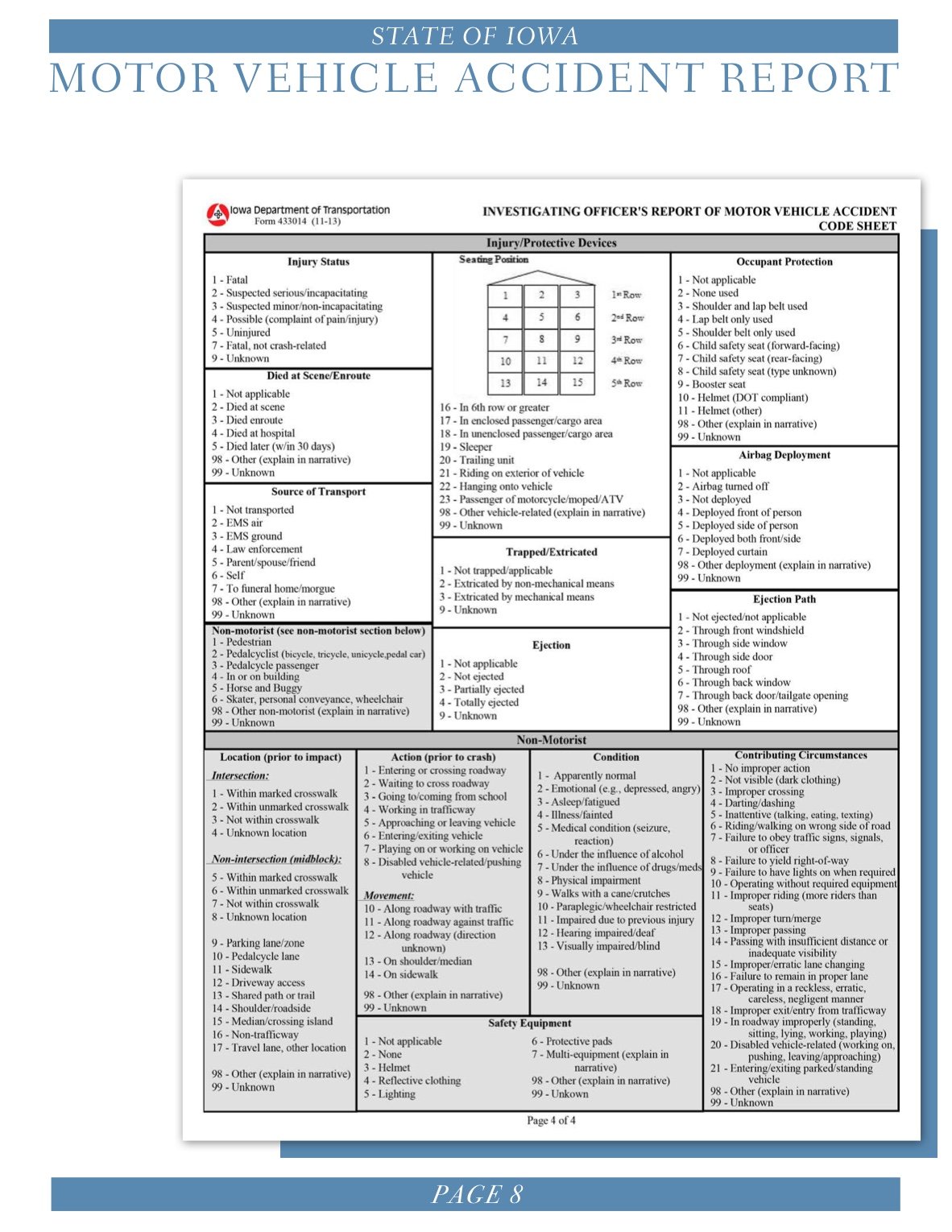
Code Sheets (4 pages)
There are four pages marked “code sheet” to define the numbers used by the investigating officer throughout the accident report. Once you find the correct section, match up the number codes used in the accident report with the number codes on the code sheet to learn what each means.





